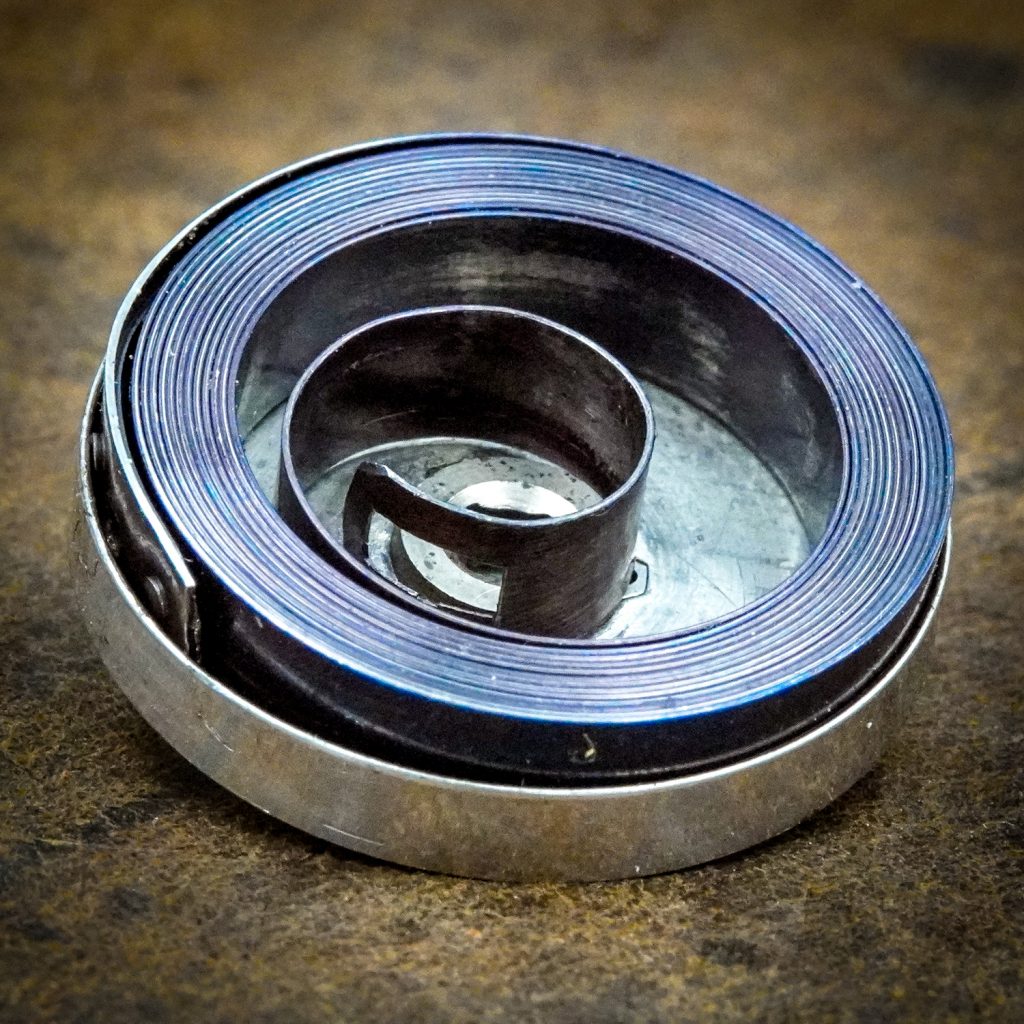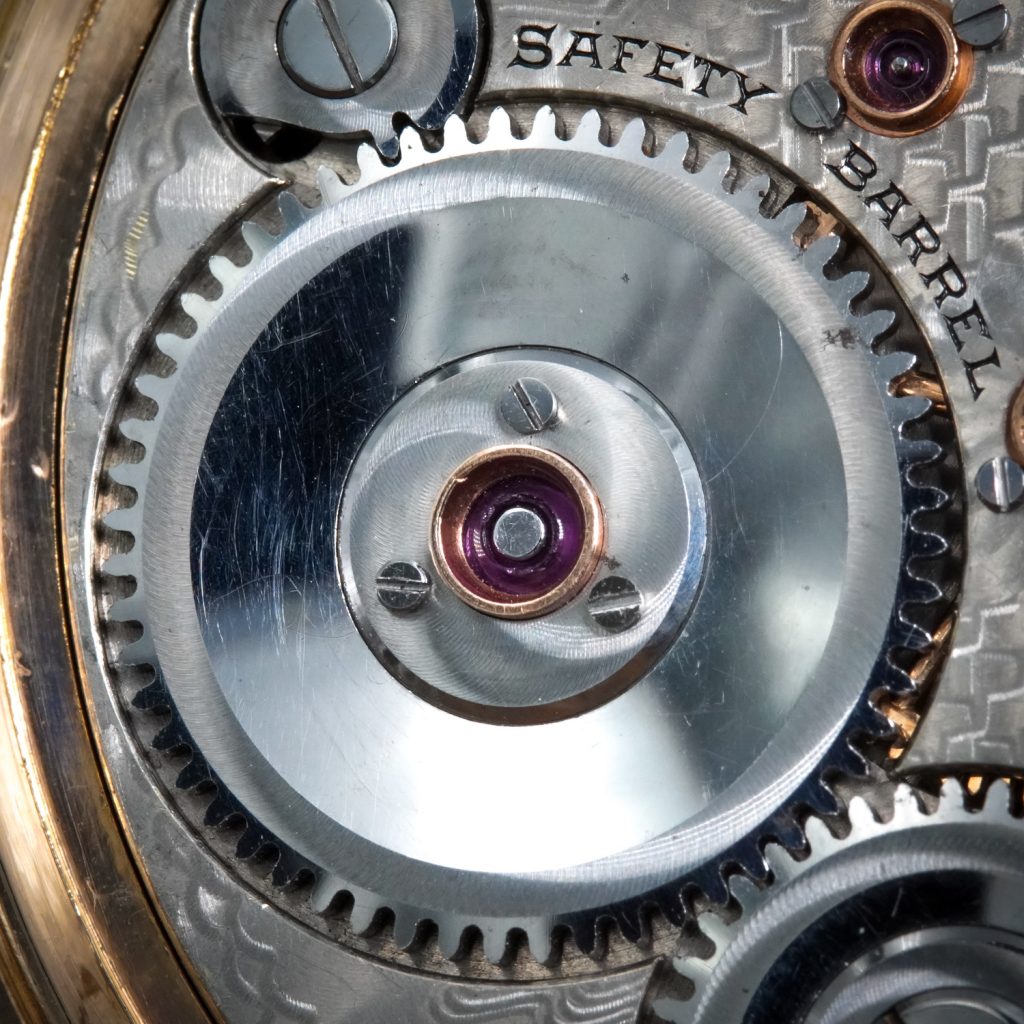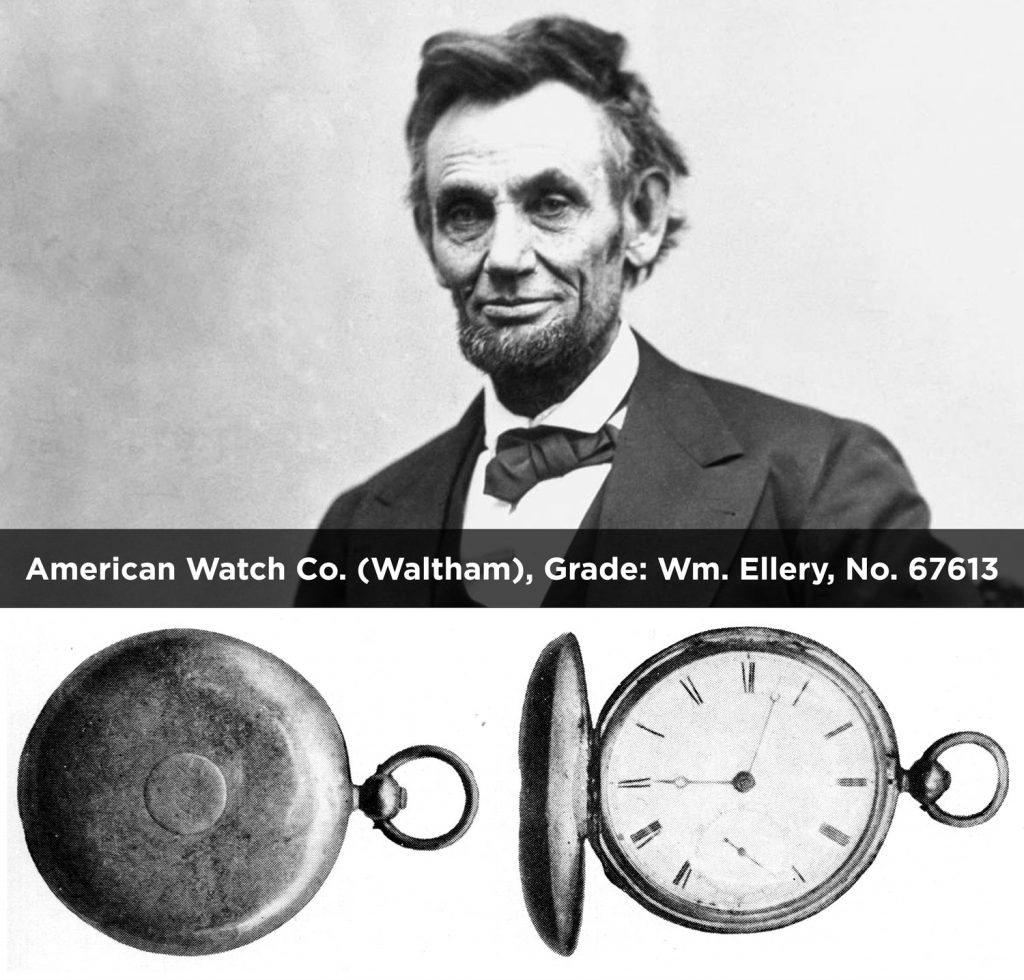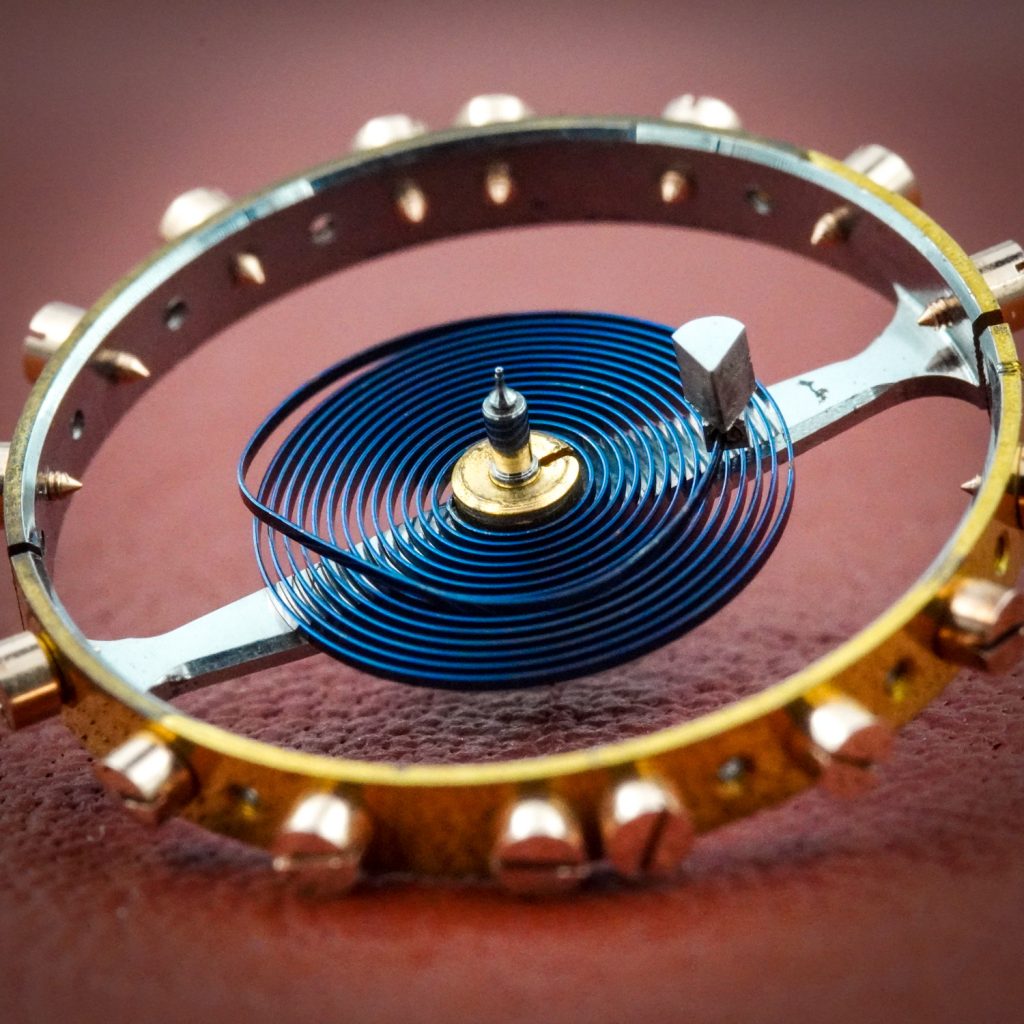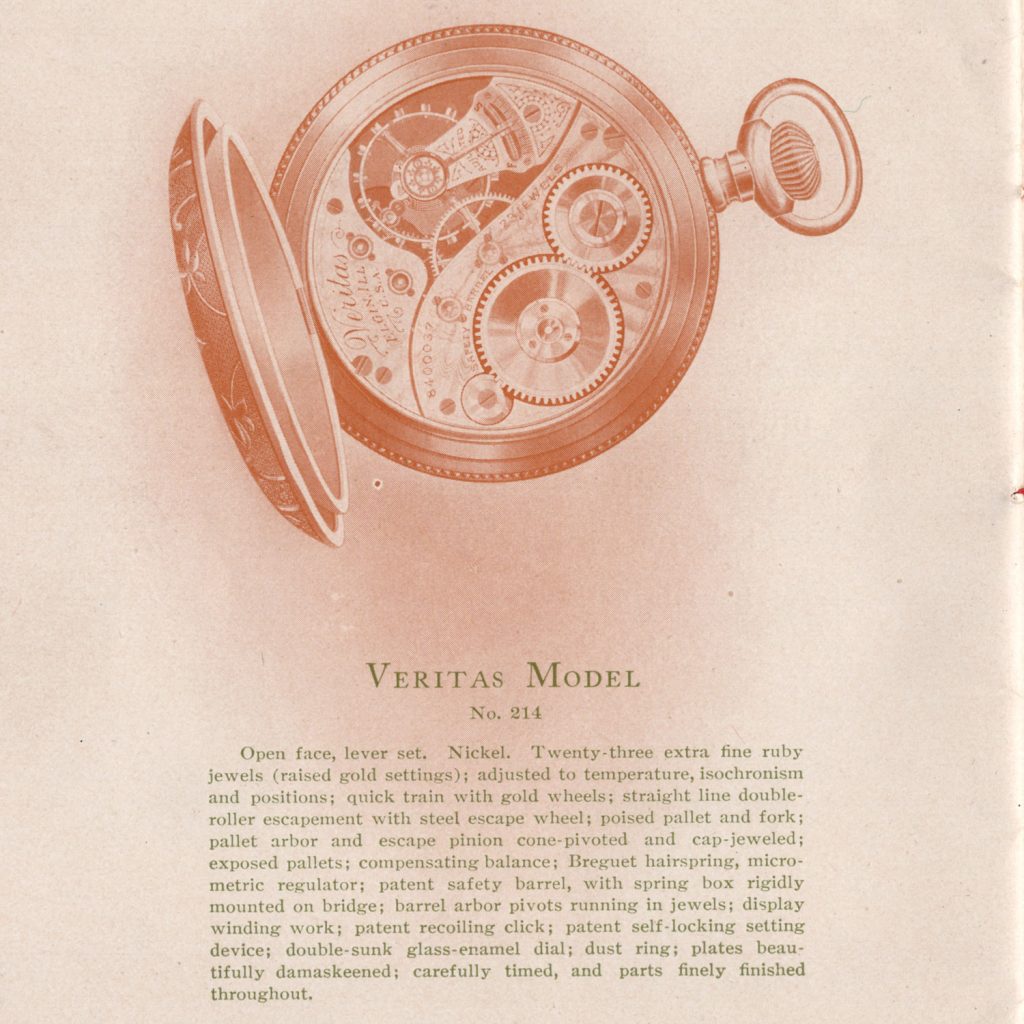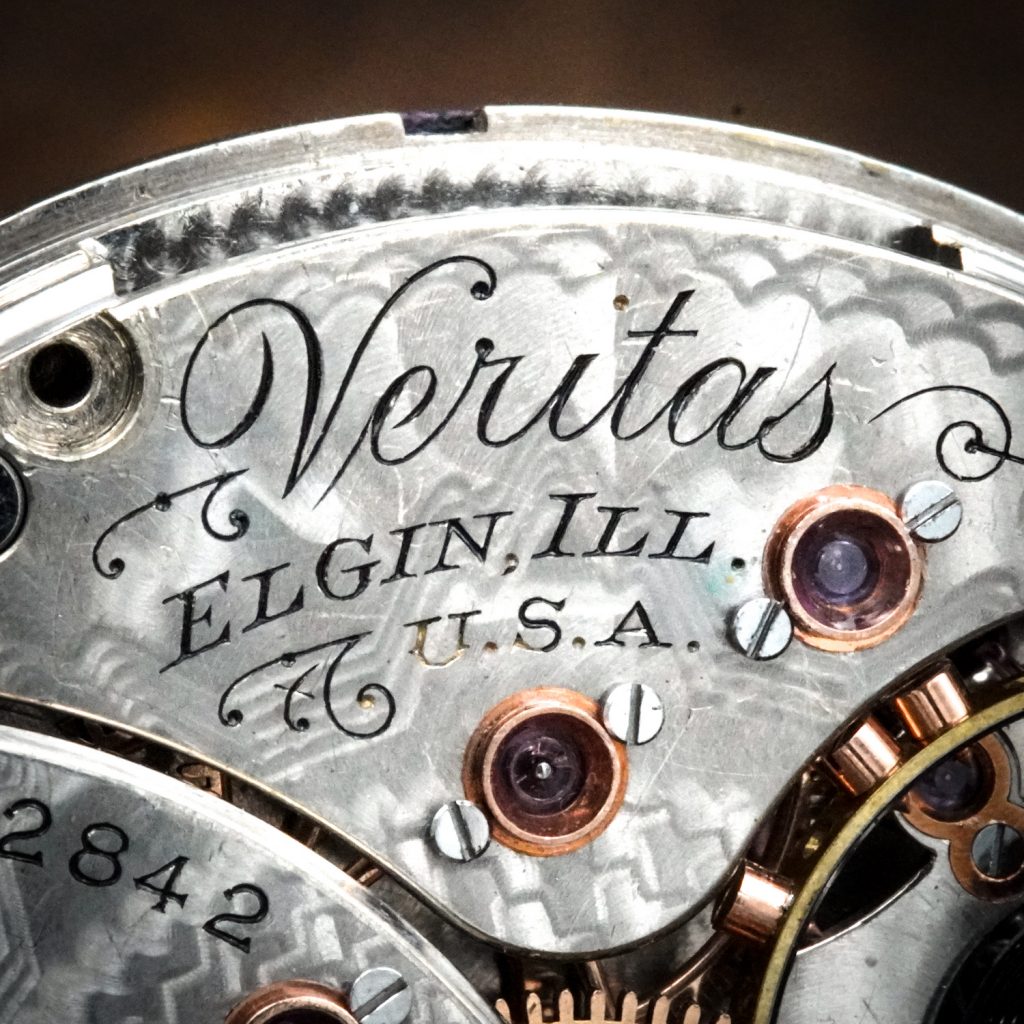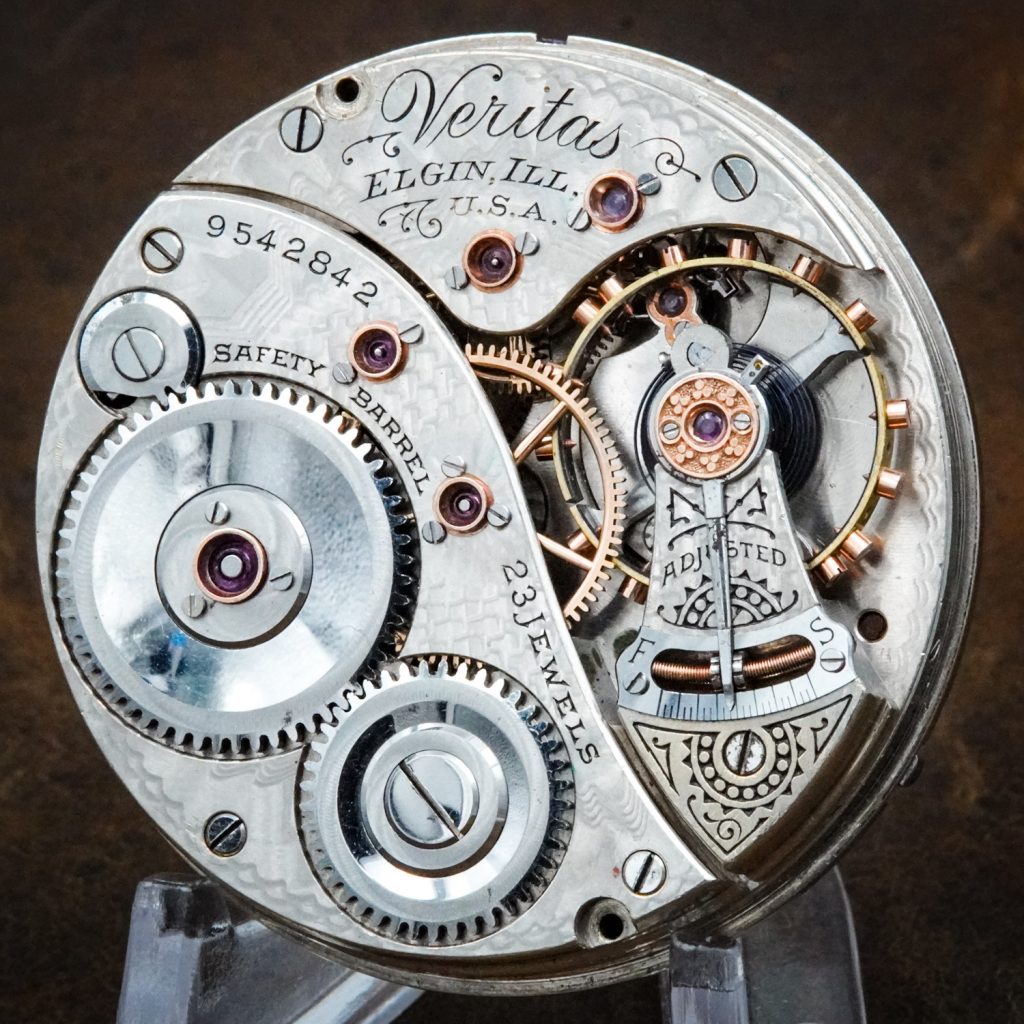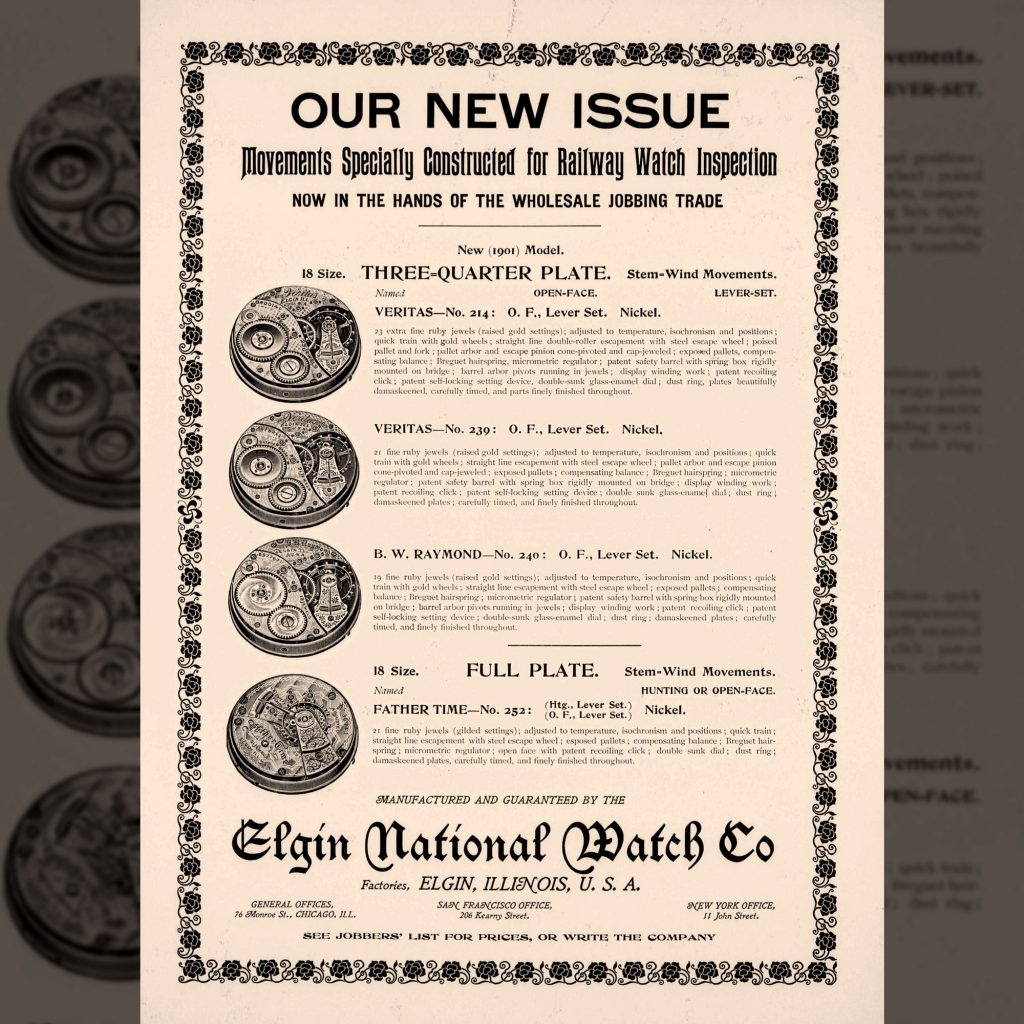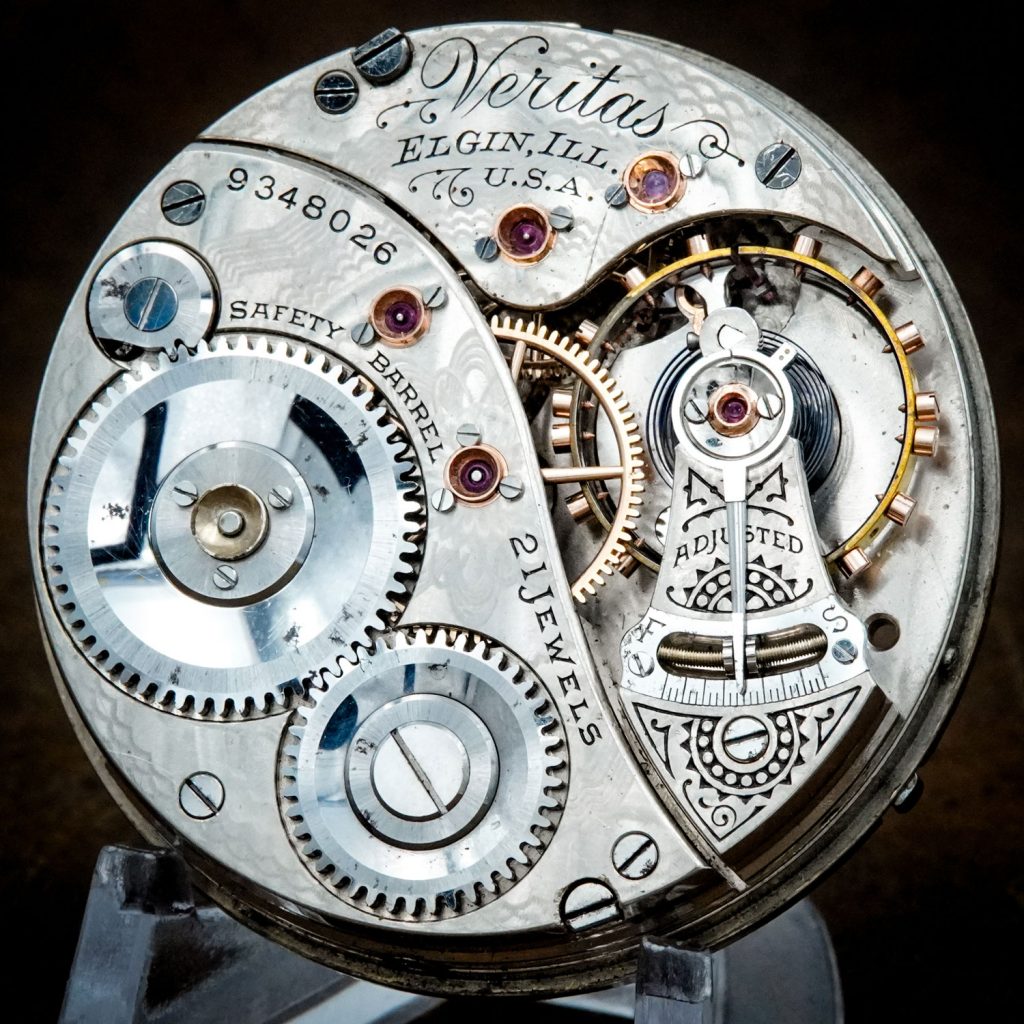Excerpt from Elgin’s 1901 “The Watch Word is Elgin: Timemakers and Timekeepers” promotional booklet, describing the features of the mainspring barrel and click in the new “Veritas” model: . “In.
My article exploring Abraham Lincoln's missing Waltham pocket watch has been featured at The American. With my interest in Lincoln and American horology, this was a perfect project to work.
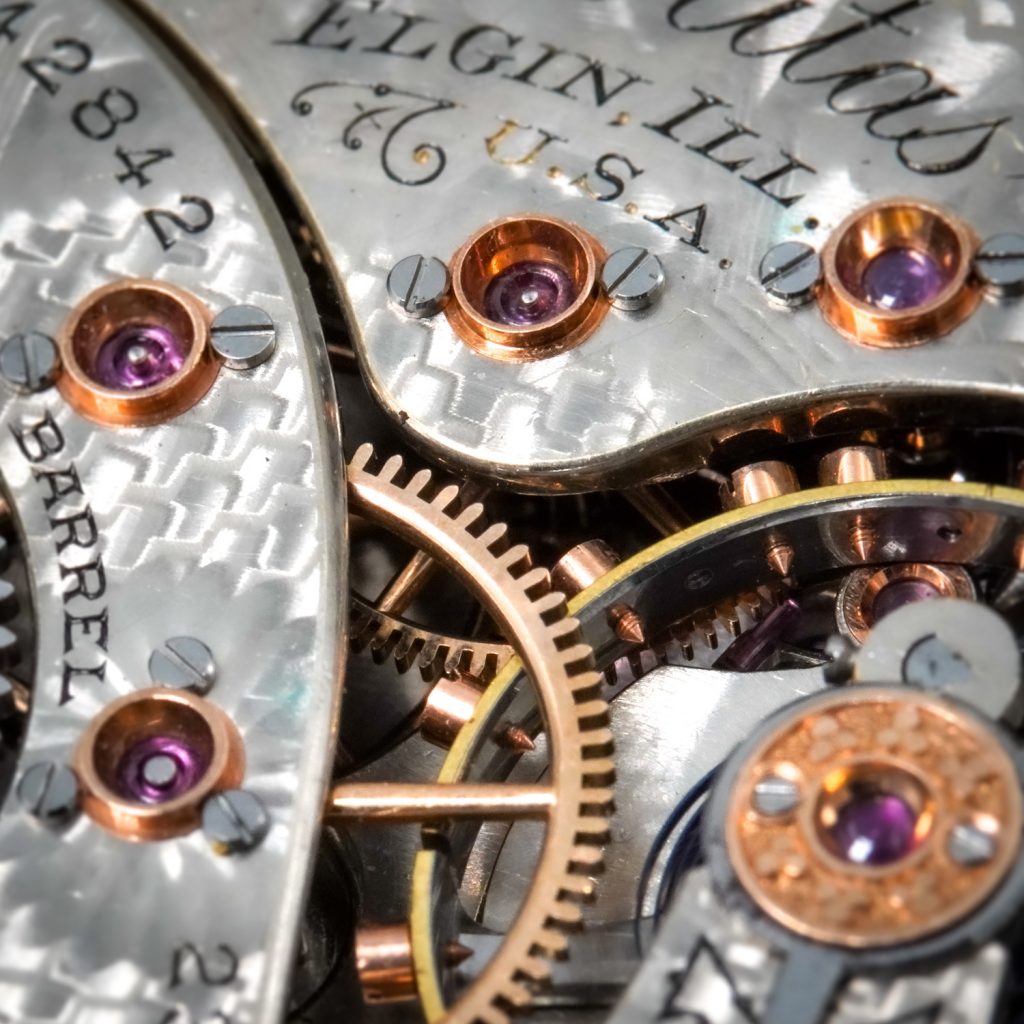
Excerpt from Elgin’s 1901 “The Watch Word is Elgin: Timemakers and Timekeepers” promotional booklet, describing the features of the hairspring in the new “Veritas” model: “All hairsprings used in the.
Shortly after the introduction of the new 18-Size railroad movements in 1901, the Elgin National Watch Company distributed a promotional booklet titled, “The Watch Word is Elgin: Timemakers and Timekeepers.”.
The No. 214 Veritas movement introduced by the Elgin National Watch Company in 1901 represents the first 23-Jewel railroad watch produced by the company. Adorned with the name “Veritas,” this.
To introduce the new “Model 1901” (Model 8), the Elgin National Watch Company published an advertisement in the March 1901 issue of The Keystone. The introductory headline indicates the new.

